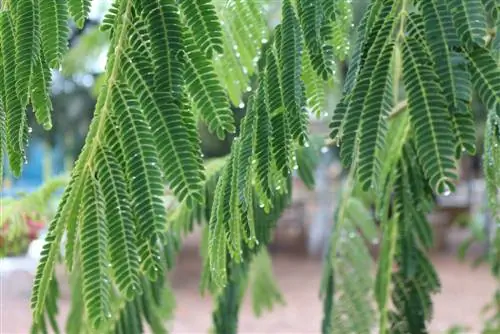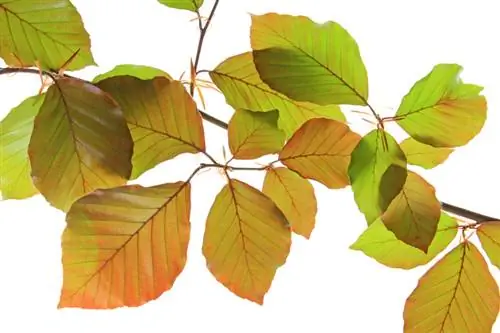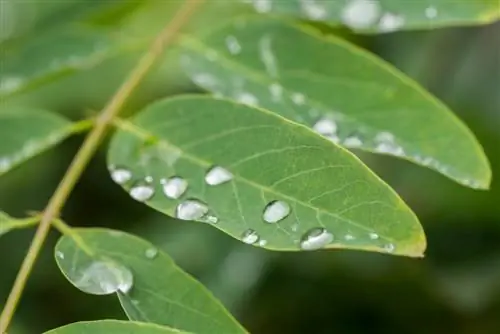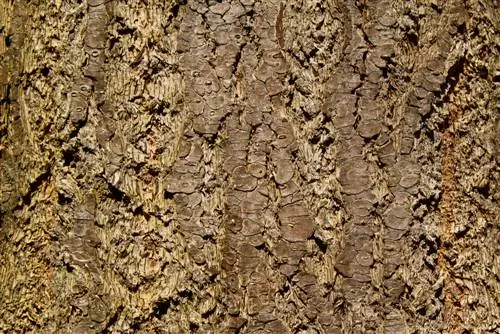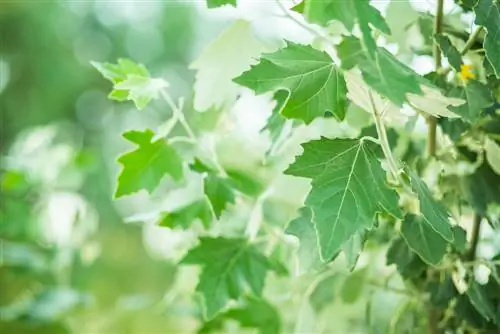- Author admin [email protected].
- Public 2023-12-16 16:46.
- Last modified 2025-01-23 11:21.
How do you recognize an acacia tree? An important feature, for example, are the leaves of the deciduous tree. Thanks to certain properties, the acacia can be easily distinguished from other trees. But do you actually know what exactly acacia leaves look like? No? Then you will find out everything you need to know in the following article.
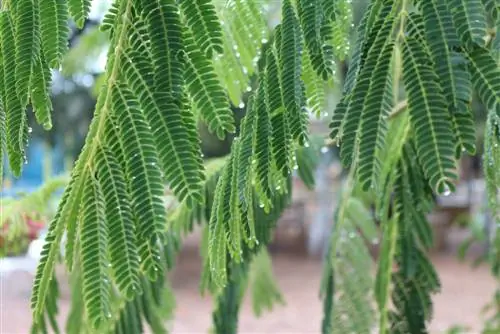
What do acacia leaves look like?
Acacia leaves are alternate, pinnate and vary in shape and color depending on the species. Examples are the silver acacia with gray-green, imparipinnate leaves and the water acacia with narrow, green leaves and smooth edges.
General information about acacia leaves
The acacia rarely sheds its leaves. The deciduous tree is actually an evergreen plant. The leaves are alternate and pinnate, but vary externally from species to species. A few acacia varieties are listed below as examples.
Different species, different leaf shapes
- the water acacia: green, narrow leaves with a smooth edge
- the silver acacia: grey-green leaves, imparipinnate, numerous individual leaves with a length of up to 18 cm
- the blackwood acacia: short-stemmed, green leaves, elongated, egg-shaped shape
- the gray Muga acacia: alternate leaves, green imparipinnate, smooth edge
- Dietrich Acacia: matt, blue-green colored leaves in an elongated shape, smooth edges, upright
- the Quorn acacia: smooth leaf edge, elongated shape, green
Acacia leaves change over time
Young acacias have a normal petiole. As growth increases, this flattens out more and more. This knowledge is extremely useful for determining the age of your acacia tree. By the way, photosynthesis takes place on the petiole of the acacia tree.
Acacia leaves have their own defense mechanism
Acacias not only have sharp thorns to protect themselves from predators, but also protect themselves with the help of their leaves. If the foliage is eaten by an animal, the acacia produces ethene, an intense scent that warns deciduous trees in the area. These then produce toxic tannins, so-called tannins. These have a toxic effect on the digestion of the pests, so that they will no longer visit an acacia tree in the future.

